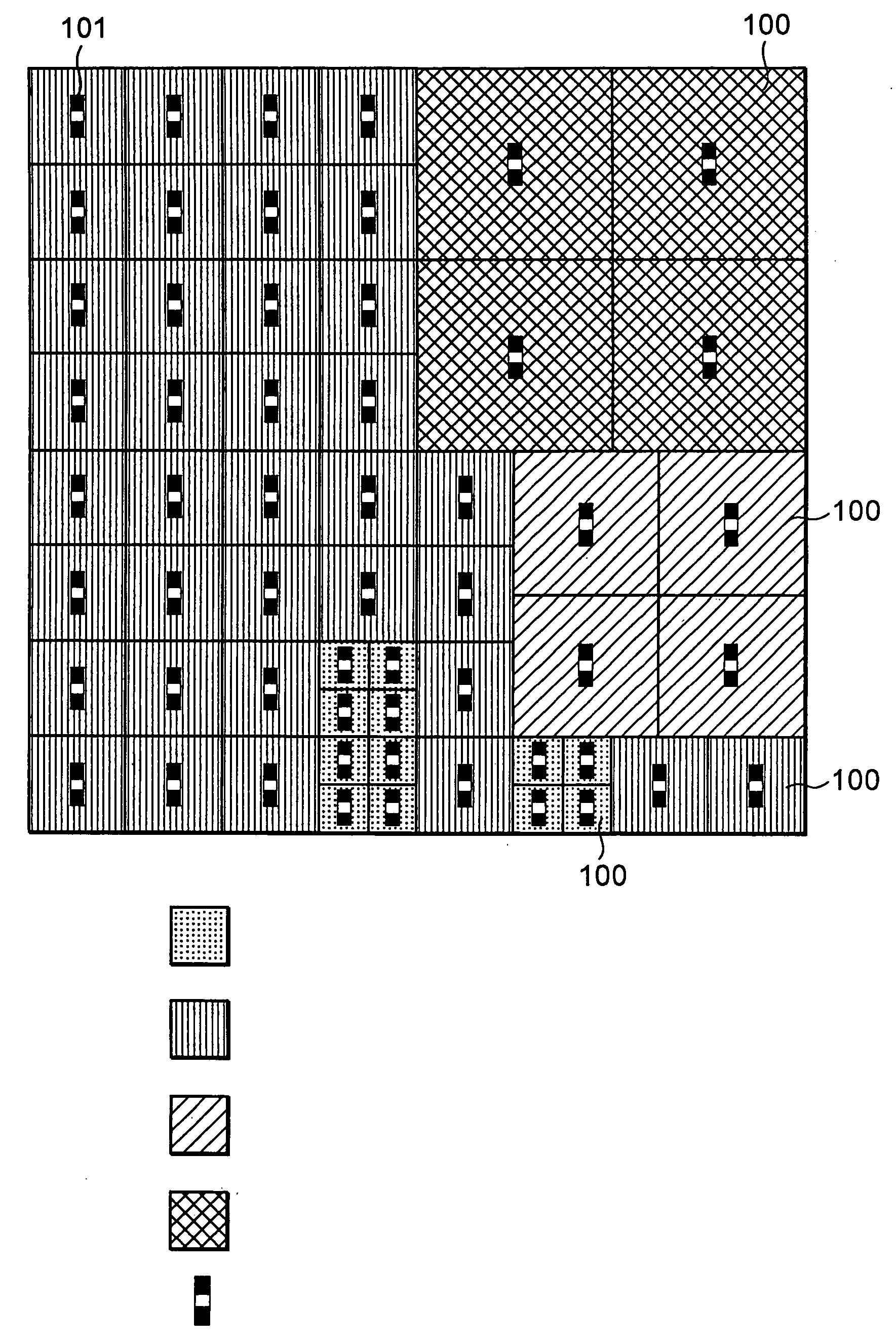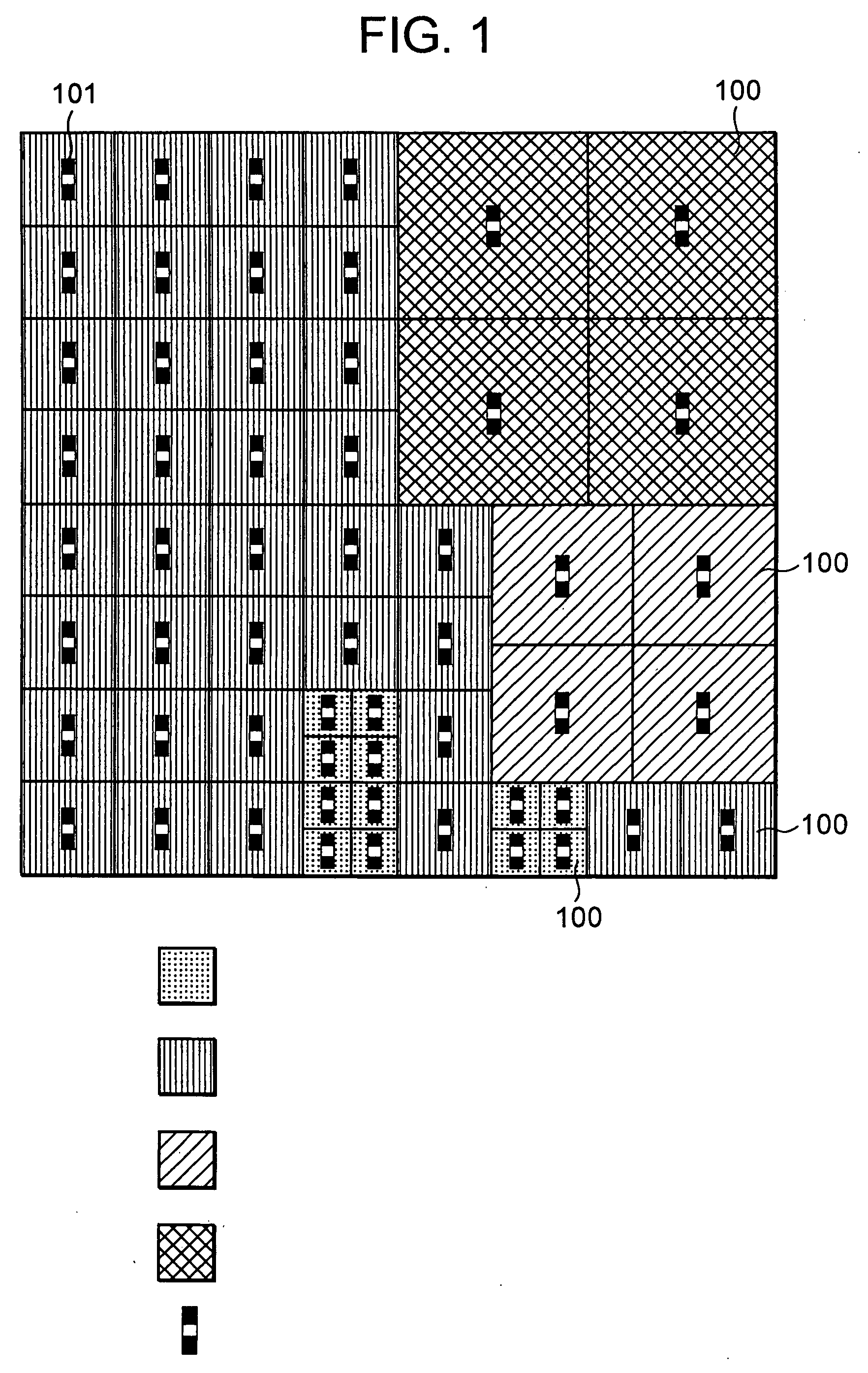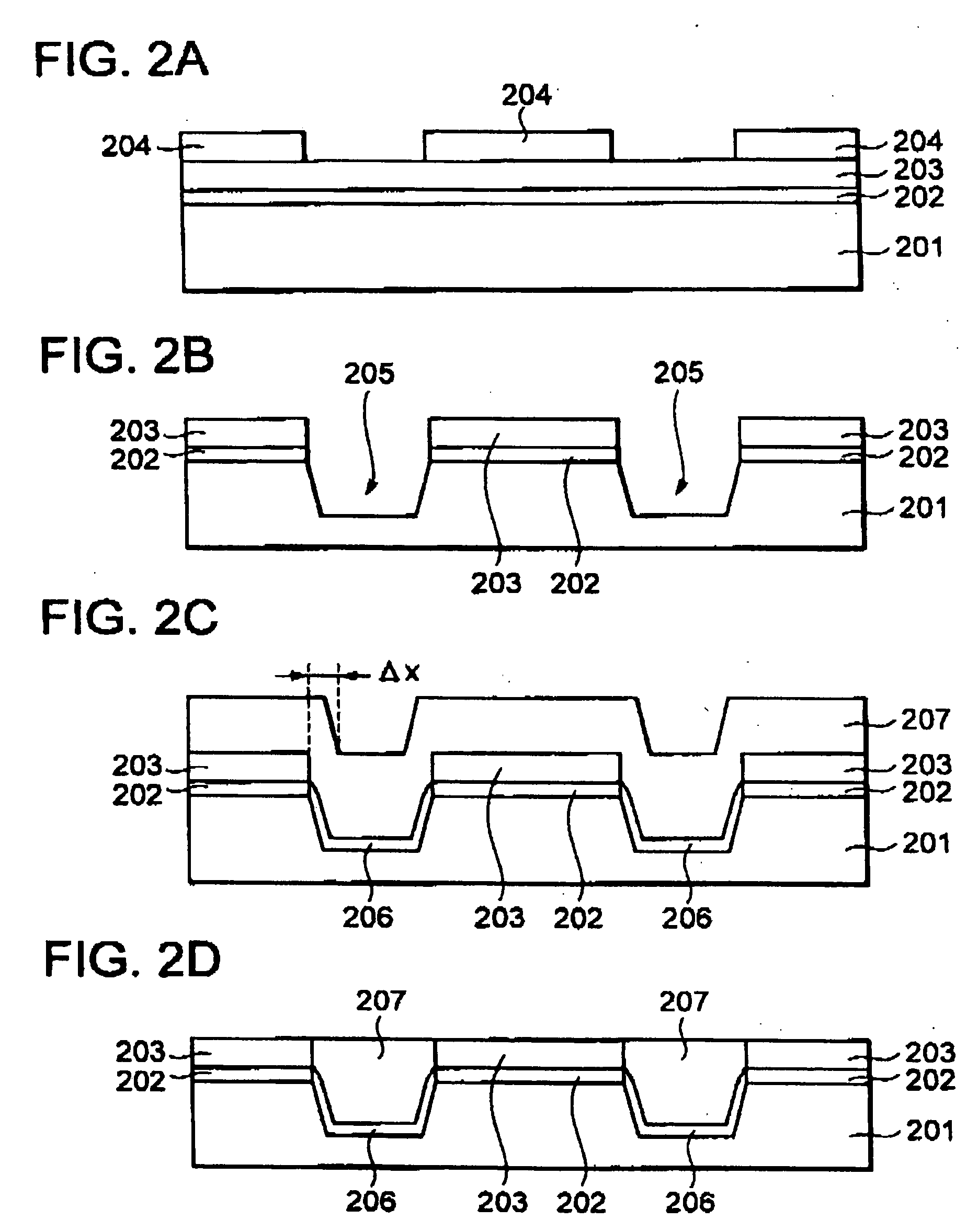Method of determining remaining film thickness in polishing process
- Summary
- Abstract
- Description
- Claims
- Application Information
AI Technical Summary
Benefits of technology
Problems solved by technology
Method used
Image
Examples
first embodiment
[0095] Incidentally, the present embodiment will explain as an example a case in which the method of the first embodiment is used as a method of determining the remaining film thickness in the polishing process.
[0096]FIG. 7 is a plan view conceptually showing polish suppressing films (silicon nitride film patterns 701) according to the present embodiment.
[0097] In the example shown in FIG. 7, the size of each of the silicon nitride film patterns 701 is set to 2.5 μm×2.5 μm in a region in which a local active pattern density is less than 5%. The size thereof is set to 1 μm×1 μm in a region in which a local active pattern density ranges from over 5% to under 10%. The interval in which the silicon nitride film patterns 701 are laid out, is set to 0.5 μm regardless of the local active pattern density. Thus, the proportion of area occupied by the silicon nitride film patterns 701 results in 69.4% in the region in which the local active pattern density is less than 5% and results in 44.4...
second embodiment
[0098] According to the present embodiment as described above, since the proportion of area occupied by the polish suppressing films is changed according to the result of determination of the remaining film thickness in the polishing process, variations in the remaining film thickness of the silicon nitride film 503 can be further suppressed as compared with the
[0099] In a manner similar to the second embodiment, the reliability of suppression of variations in the remaining film thickness can be made very high where the determining method of the present invention is used as the method of determining the remaining film thickness in the polishing process. The present embodiment is similar to the second embodiment even in that other material films can be used as the polish suppressing films.
[0100] Although the proportion of area occupied by the polish suppressing films is divided into two stages in the present embodiment, it is needless to say that it may be divided into three stages....
PUM
| Property | Measurement | Unit |
|---|---|---|
| Thickness | aaaaa | aaaaa |
Abstract
Description
Claims
Application Information
 Login to View More
Login to View More - Generate Ideas
- Intellectual Property
- Life Sciences
- Materials
- Tech Scout
- Unparalleled Data Quality
- Higher Quality Content
- 60% Fewer Hallucinations
Browse by: Latest US Patents, China's latest patents, Technical Efficacy Thesaurus, Application Domain, Technology Topic, Popular Technical Reports.
© 2025 PatSnap. All rights reserved.Legal|Privacy policy|Modern Slavery Act Transparency Statement|Sitemap|About US| Contact US: help@patsnap.com



